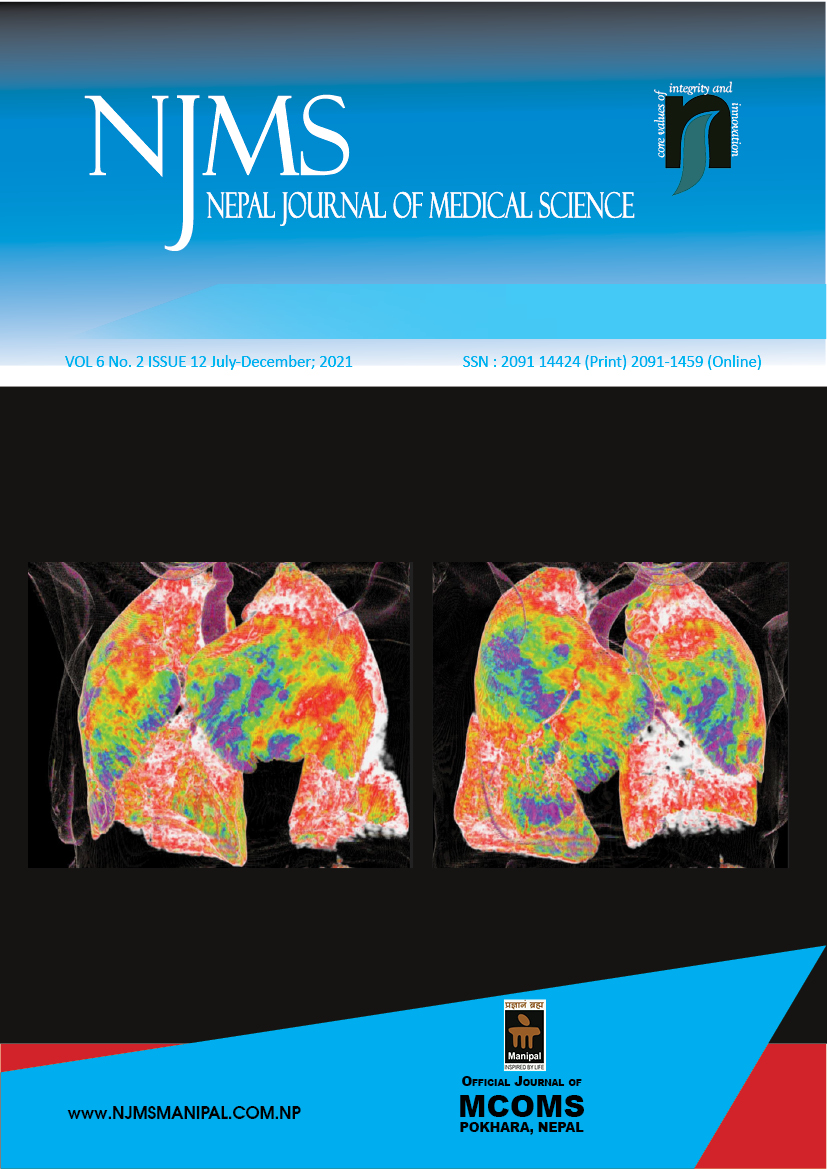Comparative Study of Reduction of Shoulder Dislocation with or without Hematoma Block
DOI:
https://doi.org/10.3126/njms.v6i2.42532Keywords:
Hematoma, Shoulder Dislocation, Shoulder JointAbstract
Introduction: Shoulder dislocations are considered one of the most common joint dislocations. These dislocations are often associated with other injuries. Most of these reductions are done in the emergency department but some may require sedation or general anesthesia. The ideal method should be easy, simple, rapid, painless, effective, atraumatic, and should cause no additional injury to the shoulder joint, nerves, vessels, or musculoskeletal structures.
Methods: Fifty-four patients with anterior shoulder dislocation were divided into 2 groups and reduction was done with or without hematoma block. Patients between 18 and 75 and dislocations within 24 hours were enrolled in the study. Spaso method was used to reduce dislocation in all the patients. Demographic data, dislocation side, dominant side, cause of injury, number of dislocations, pre-and post-reduction neurovascular examination findings, reduction time, duration of stay in the emergency department, the presence of a tuberculum majus fracture, and any complications during the pre-and post-reduction period were recorded for all patients
Results: Age and gender distributions of patients were similar between both the methods. The majority of the patients were right-handed, and dislocation was in the dominant arm in 74.07 % of patients. The side, number of dislocations, cause of dislocation, presence of tuberculum majus fracture, pre-reduction neurological status, and the success of reduction were similar among both the groups. VAS score was better among the group with the hematoma block though not significant.
Conclusion: We suggest that the hematoma block is an effective method to reduce the pain in the treatment of anterior shoulder dislocations as they facilitate pain reduction, muscle relaxation, co-operation from the patient, thus, increasing the success rate and comfort of the patient.
Downloads
Downloads
Published
How to Cite
Issue
Section
License
Copyright (c) 2022 Nepal Journal of Medical Sciences

This work is licensed under a Creative Commons Attribution 4.0 International License.
Copyright © by Nepal Journal of Medical Sciences. The ideas and opinions expressed by authors of articles summarized, quoted, or published in full text in this Journal represents only opinions of authors and do not necessarily reflect the official policy of Nepal Journal of Medical Sciences or the institute with which the author(s) is (are) affiliated, unless so specified.




